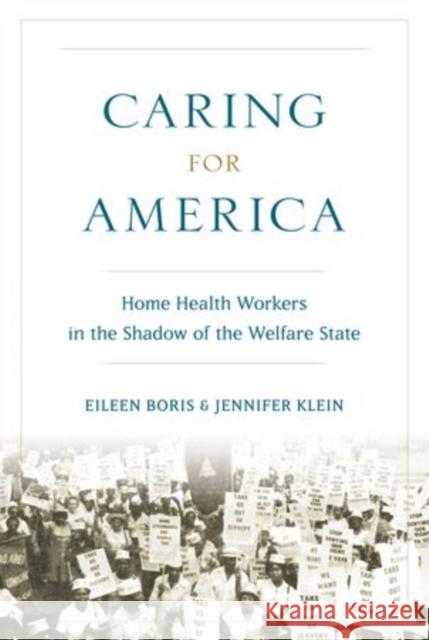Caring for America: Home Health Workers in the Shadow of the Welfare State » książka
topmenu
Caring for America: Home Health Workers in the Shadow of the Welfare State
ISBN-13: 9780195329117 / Angielski / Twarda / 2012 / 320 str.
Caring for America: Home Health Workers in the Shadow of the Welfare State
ISBN-13: 9780195329117 / Angielski / Twarda / 2012 / 320 str.
cena 241,49
(netto: 229,99 VAT: 5%)
Najniższa cena z 30 dni: 218,62
(netto: 229,99 VAT: 5%)
Najniższa cena z 30 dni: 218,62
Termin realizacji zamówienia:
ok. 30 dni roboczych
Bez gwarancji dostawy przed świętami
ok. 30 dni roboczych
Bez gwarancji dostawy przed świętami
Darmowa dostawa!
In this sweeping narrative history from the Great Depression of the 1930s to the Great Recession of today, Caring for America rethinks both the history of the American welfare state from the perspective of care work and chronicles how home care workers eventually became one of the most vibrant forces in the American labor movement. Eileen Boris and Jennifer Klein demonstrate the ways in which law and social policy made home care a low-waged job that was stigmatized as welfare and relegated to the bottom of the medical hierarchy.
For decades, these front-line caregivers labored in the shadows of a welfare state that shaped the conditions of the occupation. Disparate, often chaotic programs for home care, which allowed needy, elderly, and disabled people to avoid institutionalization, historically paid poverty wages to the African American and immigrant women who constituted the majority of the labor force. Yet policymakers and welfare administrators linked discourses of dependence and independence-claiming that such jobs would end clients' and workers' "dependence" on the state and provide a ticket to economic independence. The history of home care illuminates the fractured evolution of the modern American welfare state since the New Deal and its race, gender, and class fissures. It reveals why there is no adequate long-term care in America. Caring for America is much more than a history of social policy, however; it is also about a powerful contemporary social movement. At the front and center of the narrative are the workers-poor women of color-who have challenged the racial, social, and economic stigmas embedded in the system. Caring for America traces the intertwined, sometimes conflicting search of care providers and receivers for dignity, self-determination, and security. It highlights the senior citizen and independent living movements; the civil rights organizing of women on welfare and domestic workers; the battles of public sector unions; and the unionization of health and service workers. It rethinks the strategies of the U.S. labor movement in terms of a growing care work economy. Finally, it makes a powerful argument that care is a basic right for all and that care work merits a living wage.










